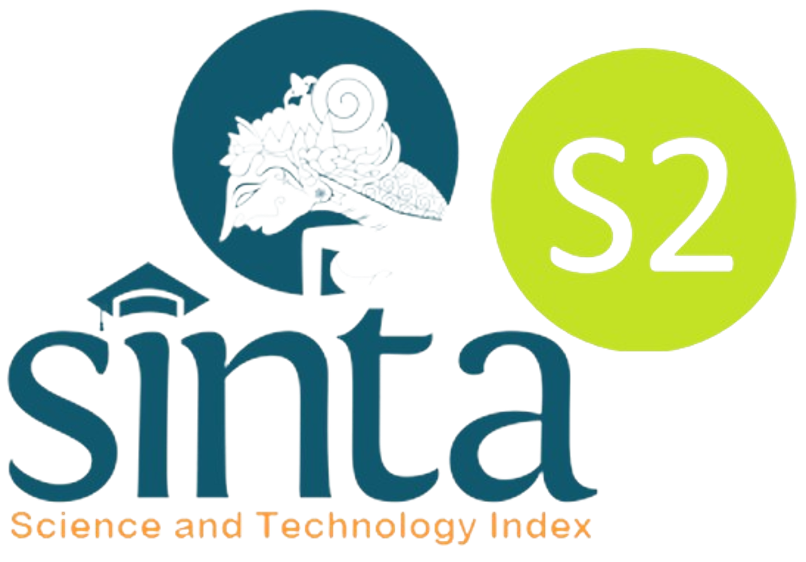Ethnomathematics in Borobudur Temple and Its Relevance in Mathematics Education
Abstract
Abstract: Ethnomathematics in Borobudur Temple and Its Relevance in Mathematics Education. Objectives: The purpose of this literature study is to reveal the forms of mathematical culture in temples in Indonesia, especially in the Borobudur Temple. Methods: The object of this study is the scientific literature on the theme of ethnomathematics and Borobudur Temple. The stages of this research are determining the research problem, finding and evaluating relevant literature, conducting data analysis, and compiling the results. The data analysis technique used was hermeneutics analysis. Findings: In this study, it has been revealed that Borobudur Temple is a building that has been designed with great mathematical techniques. There is a numbering system, so-called watakwilangan and primbon in Javanese culture that regard the number does not only refer to certain quantity, but also a character affecting human life. In addition, geometric shapes appear on the structure, both basic geometric shapes, and fractal shapes. High architectural techniques and the effort inassembling this endurable building is an evidence that Borobudur Temple Architecture has an immeasurable concept of logic and systematization. Conclusion: There are unique mathematical concepts in the form of Javanese number systems, logic, and space configurations that can create a beautiful and persisting building.
Keywords: ethnomathematics, borobudur, culture, mathematics, education.
Abstrak: Etnomatematika pada Candi Borobudur dan Relevansinya pada Pendidikan Matematika.Tujuan: Penelitian studi literatur ini bertujuan untuk mengungkap bentuk-bentuk matematika budaya pada candi di Indonesia, khususnya Candi Borobudur. Metode: Objek kajian ini adalah literature yang bertema etnomatematika dan candi Borobudur. Tahapan penelitian ini adalah penentukan masalah penelitian, mencari dan menilai literature yang relevan, melakukan analisis data dan menyusun hasil. Temuan: Pada penelitian ini terungkap bahwa Candi Borobudur adalah bangunan yang dirancang dengan teknik matematika yang tinggi. Sistem bilangan pada budaya jawa tidak hanya mewakili jumlah tertentu, tetapi juga suatu karakter yang mempengaruhi kehidupan manusia. Selain itu, bentuk geometris muncul pada bagunan itu, baik bentuk geometris dasar maupun bentuk fraktal. Teknik arsitektur yang tinggi dan usaha untuk membuat bangunan ini bertahan lama adalah bukti bahwa arsitektur Candi Borobudur memiliki konsep logika dan sistematisasi yang baik. Kesimpulan: Terdapat konsep matematika yang unik baik berupa sistem bilangan jawa, logika dan konfigurasi ruang yang bisa membuat bangunan menjadi indah dan bertahan.
Kata kunci: etnomatematika, borobudur, budaya, pendidikan matematika.
Full Text:
PDFReferences
Abi, A. M. (2017). Integrasi etnomatematika dalam kurikulum matematika sekolah. JPMI (Jurnal Pendidikan Matematika Indonesia), 1(1), 1–6.
Amit, M., & Abu Qouder, F. (2017). Weaving Culture and Mathematics in the Classroom: The Case of Bedouin Ethnomathematics. In M. Rosa, L. Shirley, M. E. Gavarrete, & W. V. Alangui (Eds.), Ethnomathematics and its Diverse Approaches for Mathematics Education (pp. 23–50). https://doi.org/10.1007/978-3-319-59220-6_2
Ascher, M. (2017). Ethnomathematics: A multicultural view of mathematical ideas. Routledge.
Bishop, A. J. (1990). Western mathematics: The secret weapon of cultural imperialism. Race & Class, 32(2), 51–65.
Miller, R. L., & Brewer, J. D. (2003). The AZ of social research: A dictionary of key social science research concepts. Sage.
Muhtadi, D. (2017). Sundanese Ethnomathematics: Mathematical Activities in Estimating, Measuring, and Making Patterns. Journal on Mathematics Education, 8(2), 185–198.
Munandar, A. A. (2018). Borobudur Temple: The Interchange of Humanity Values and Ancient Architecture Development in Southeast Asia. International Review of Humanities Studies, 1(2).
Powell, A. B., & Frankenstein, M. (1997). Ehtnomathematical Knowledge. In Ethnomathematics Challenging Eurocentrism in Mathematics Education. New York, NY: State University of New York Press.
Prabowo, A. (2010). Bilangan Dalam Khasanah Budaya Jawa. Proc. of the Seminar Nasional Matematika Dan Pendidikan Matematika, 458–468.
Puspitasari, D. E., Setyawan, H., & Rini, W. D. P. (2016). Kearsitekturan Candi Borobudur. Balai Konservasi Borobudur.
Rani, V. (2018). Etnomatematika Pada Candi Ratu Boko Sebagai Pendukung Pembelajaran Matematika Realistik. Prosiding Seminar Nasional, 1.
Rosa, M., & Gavarrete, M. E. (2017). An Ethnomathematics Overview: An Introduction. In Ethnomathematics and its Diverse Approaches for Mathematics Education (pp. 3–19). Springer.
Rosa, M., & Orey, D. C. (2016). State of the Art in Ethnomathematics. In M. Rosa, U. D’Ambrosio, D. C. Orey, L. Shirley, W. V. Alangui, P. Palhares, & M. E. Gavarrete (Eds.), Current and Future Perspectives of Ethnomathematics as a Program (pp. 11–37). https://doi.org/10.1007/978-3-319-30120-4_3
Setyawan, H., & Gunawan, A. (2018). Penanganan Isu Keterawatan Candi Borobudur (Pembatasan Penggunaan Bahan Kimia dan Penanganan Kebocoran Dinding Candi Borobudur). In Pelestarian Cagar Budayaku 10 Tahun Pelestarian Candi Borobudur 2007-2017. Balai Konservasi Borobudur.
Situngkir, H. (2018). Kode-Kode Nusantara. Expose.
Suwito, A., & Trapsilasiwi, D. (2016). Pengembangan model pembelajaran matematika SMP kelas VII berbasis kehidupan masyarakat JAWARA (Jawa dan Madura) di Kabupaten Jember. JIPM (Jurnal Ilmiah Pendidikan Matematika), 4(2), 79–84.
Refbacks
- There are currently no refbacks.
Copyright (c) 2020 Jurnal Pendidikan Progresif

This work is licensed under a Creative Commons Attribution-ShareAlike 4.0 International License.
View My Stats

The copyright is reserved to The Jurnal Pendidikan Progresif that is licensed under a Creative Commons Attribution-ShareAlike 4.0 International License.





